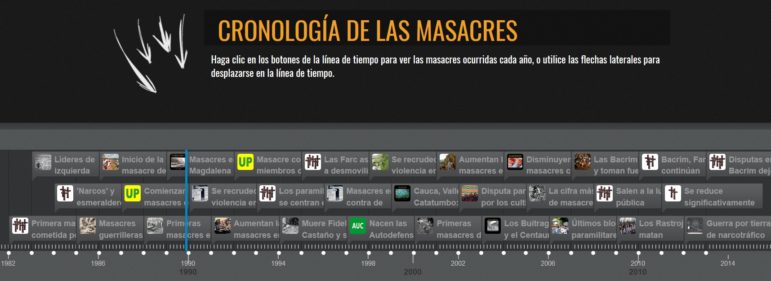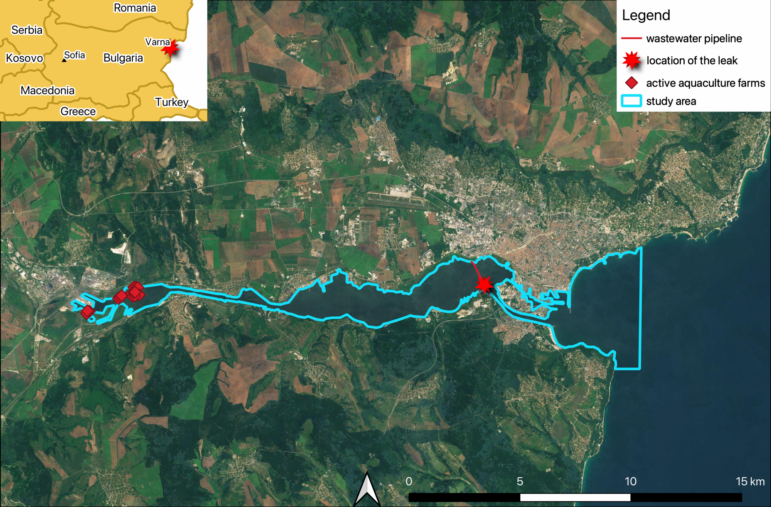

War and Peace: 3 Colombian Journalism Projects Using New Narrative Strategies
 Colombia is a country in transition. Since the signing of the peace agreement between the Colombian government and the Revolutionary Forces of Colombia (FARC) in November 2016, the country has faced a series of political, social and institutional transformations. Journalism is no exception, as ethical, creative and editorial challenges have increased in recent years.
Colombia is a country in transition. Since the signing of the peace agreement between the Colombian government and the Revolutionary Forces of Colombia (FARC) in November 2016, the country has faced a series of political, social and institutional transformations. Journalism is no exception, as ethical, creative and editorial challenges have increased in recent years.
Traditional war reporting, which mostly focused on revealing the brutality of the conflict, is being replaced by new storytelling techniques using alternative narratives and creative digital tools. Publications and audiences are changing as they define and consolidate the new role of journalism in this moment in history.
The following three projects are using new tools and narratives to play a role in the conversation surrounding the peace agreement.
Proyecto Coca
Pacifista launched Proyecto Coca (Project Coca) 18 months ago in an attempt to contribute to high-level debate and to tell real, compelling stories about the weakest link in the drug trafficking chain: coca growers.
“The greatest innovation of the project is that it addresses a social and political reality that no one is looking at, involving a group that has been marginalized from the national debate,” said Andrés Bermúdez, director of the initiative. “We do this with the rigor and human approach that journalism must have, and by providing the necessary data for an informed, prejudice-free discussion.”
The issue of illicit drugs is a major point in the agreement between the government and the FARC, and therefore requires adequate coverage.
But Proyecto Coca takes a unique approach, focusing on solutions journalism and using different digital formats. As a result, they give visibility to the struggles of the cocaleros, or coca growers, by explaining their complex reality and how it may be transformed in the future.
Rutas del Conflicto
Rutas del conflicto (Conflict Routes) is a data journalism project that maps the massacres that have occurred in Colombia since 1982. The goal is to provide audiences with information obtained from academic, judicial and investigative journalism sources with the help of different data visualization tools.
As explained on its website, “Rutas del Conflicto also seeks to connect internet users based in large cities, with the dynamics of a war that reached its maximum intensity in the most remote regions of the country.”
For this, the team has used formats as diverse as videos, timelines, pictures and podcasts.
4 Ríos
4 Ríos (4 Rivers) is a multi-platform media project that tells stories of the armed conflict in Colombia by combining art and technology. According to the director, Manuel Tobar, “it is not strictly a documentary or journalism project. The investigation begins with data and other sources, but approaches the conflict from a sensitive and aesthetic angle.”
Since its launch in 2014, 4 Ríos has used different narrative strategies and platforms to reach its audience. It currently presents its contents through a website, an interactive comic with historical information and illustrations that recreate scenes of the conflict using augmented reality on mobile devices.
“What 4 Rivers does is take artistic license, moving away from a single type of storytelling,” said Tobar. “It embraces new experiences through exploration, discovery and the multiple possibilities of a story.”
What’s Next?
These three projects illustrate how journalism shifts to meet the needs of society at historical moments like the one Colombia is currently experiencing.
Narrative, editorial and content-based initiatives at the service of the audiences manage to give meaning to Colombia’s reality and promote spaces for dialogue, memory and even reconciliation.
What’s next? Motivating newsrooms, taking risks and covering the new course of events.
This post first appeared on the IJNet website and is cross-posted here with permission.
 Nadya Hernández is a Colombian journalist with nine years of experience covering peace-building, democracy and the empowerment of local actors. She is also a fellow with the International Center for Journalists.
Nadya Hernández is a Colombian journalist with nine years of experience covering peace-building, democracy and the empowerment of local actors. She is also a fellow with the International Center for Journalists.











